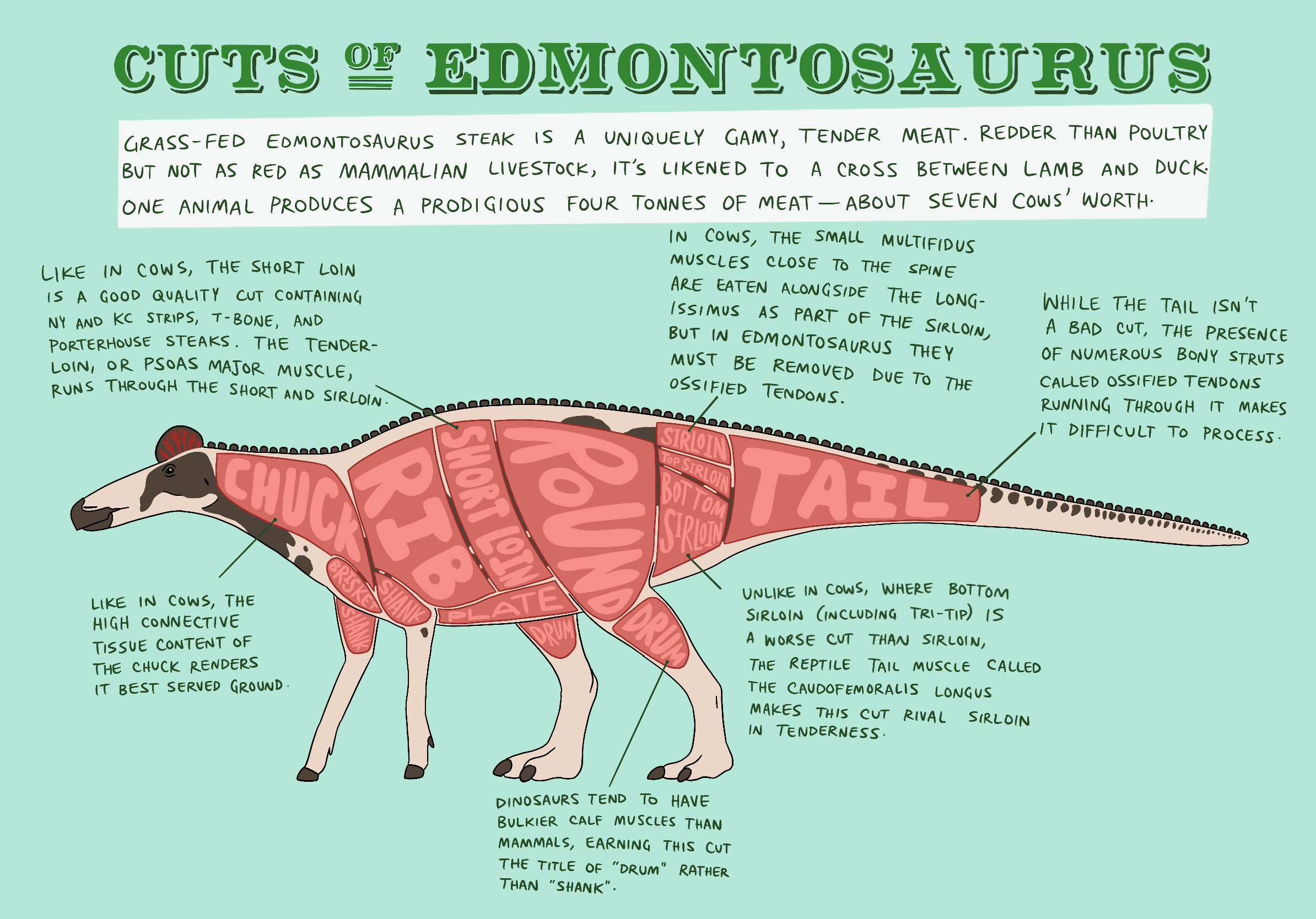While my bachelorette party was in Denver looking at fossils, my brother had this idea while looking at Plectronoceras: “It would make good calamari–just hang the cone over a wire and deep-fry it right in the shell.”
While this particular method is impractical for a couple reasons, it was quite an inspiring idea despite the fact that I’m vegetarian. Here are a few potential recipes from the Time Traveller’s Cookbook!
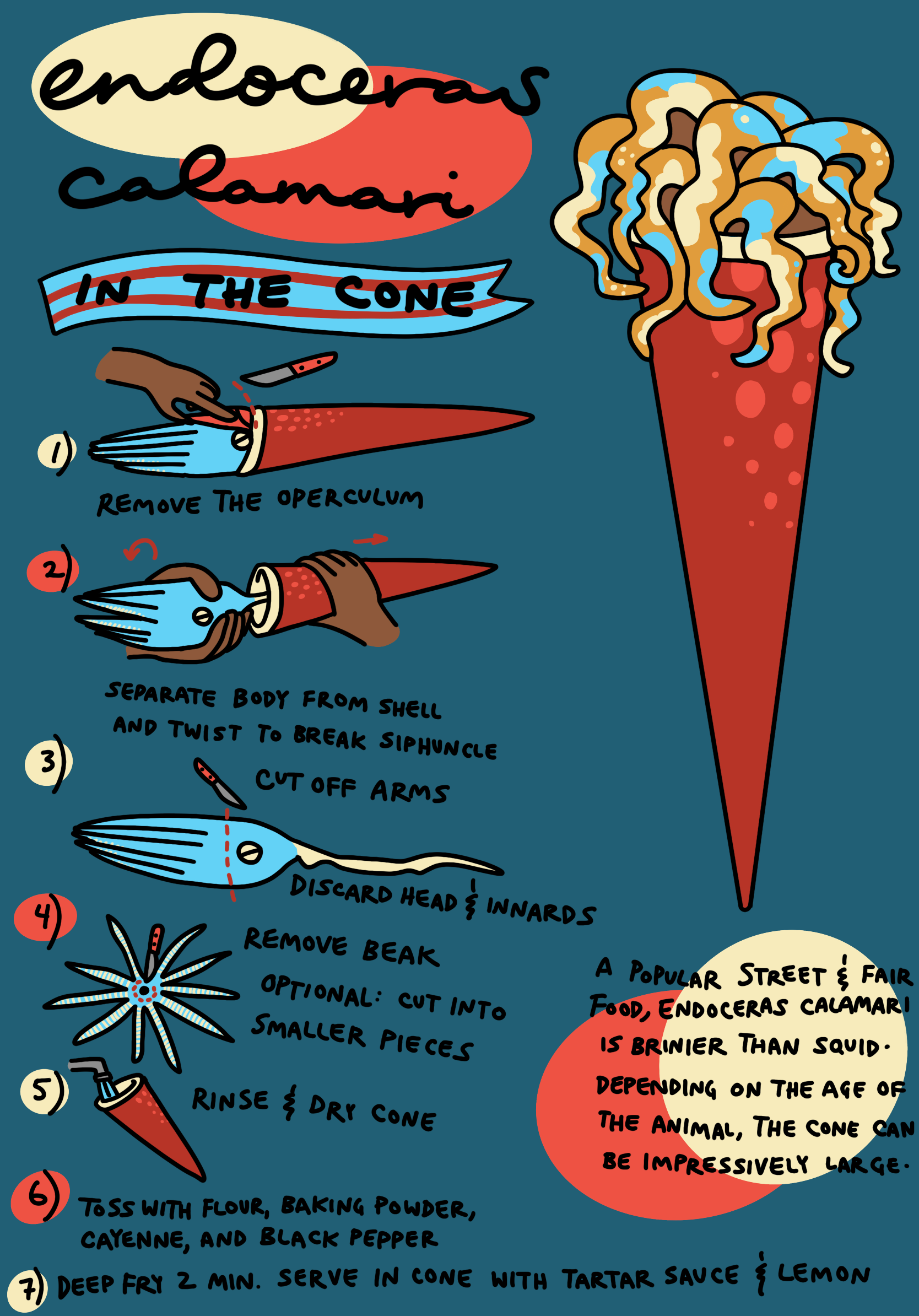
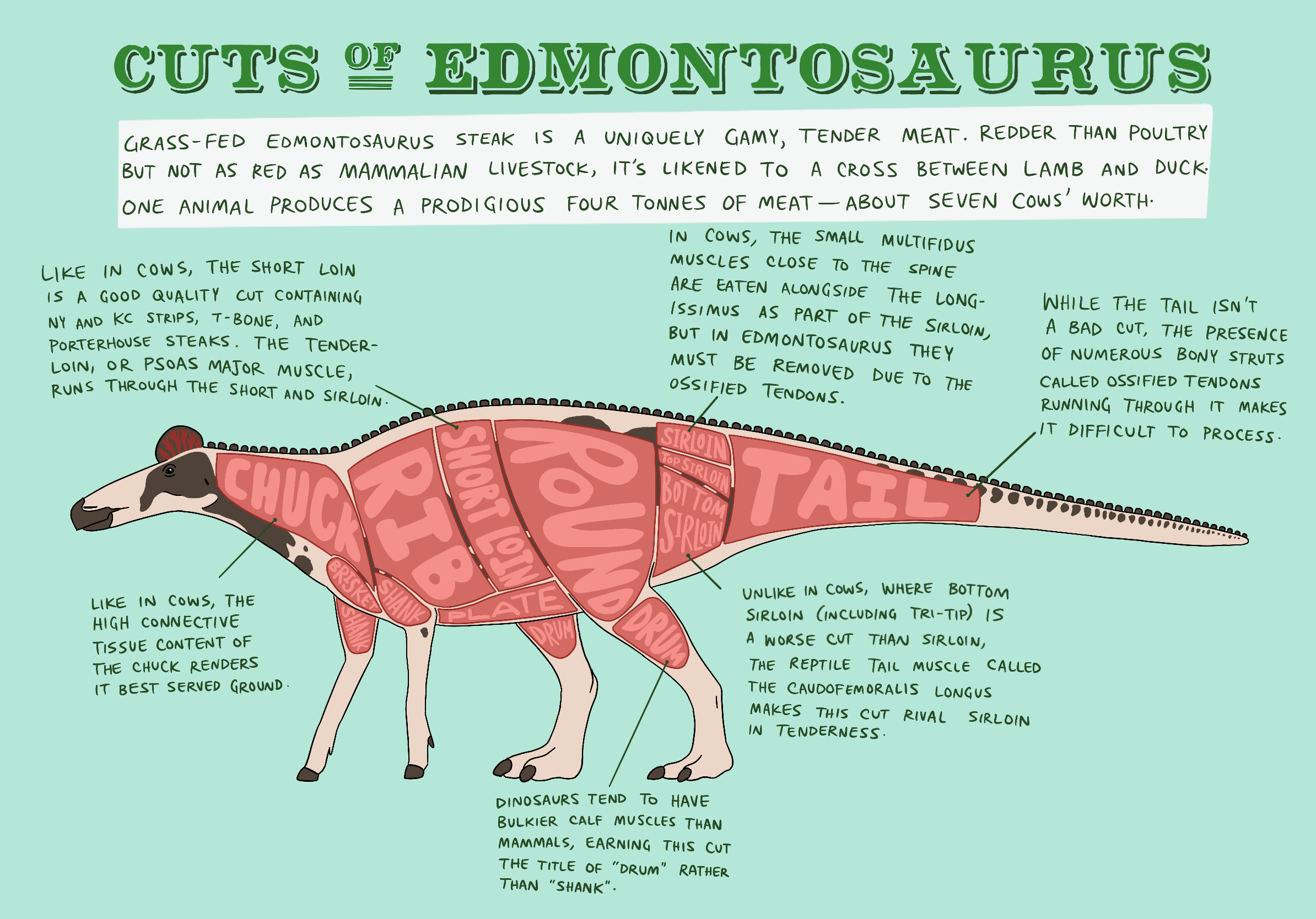
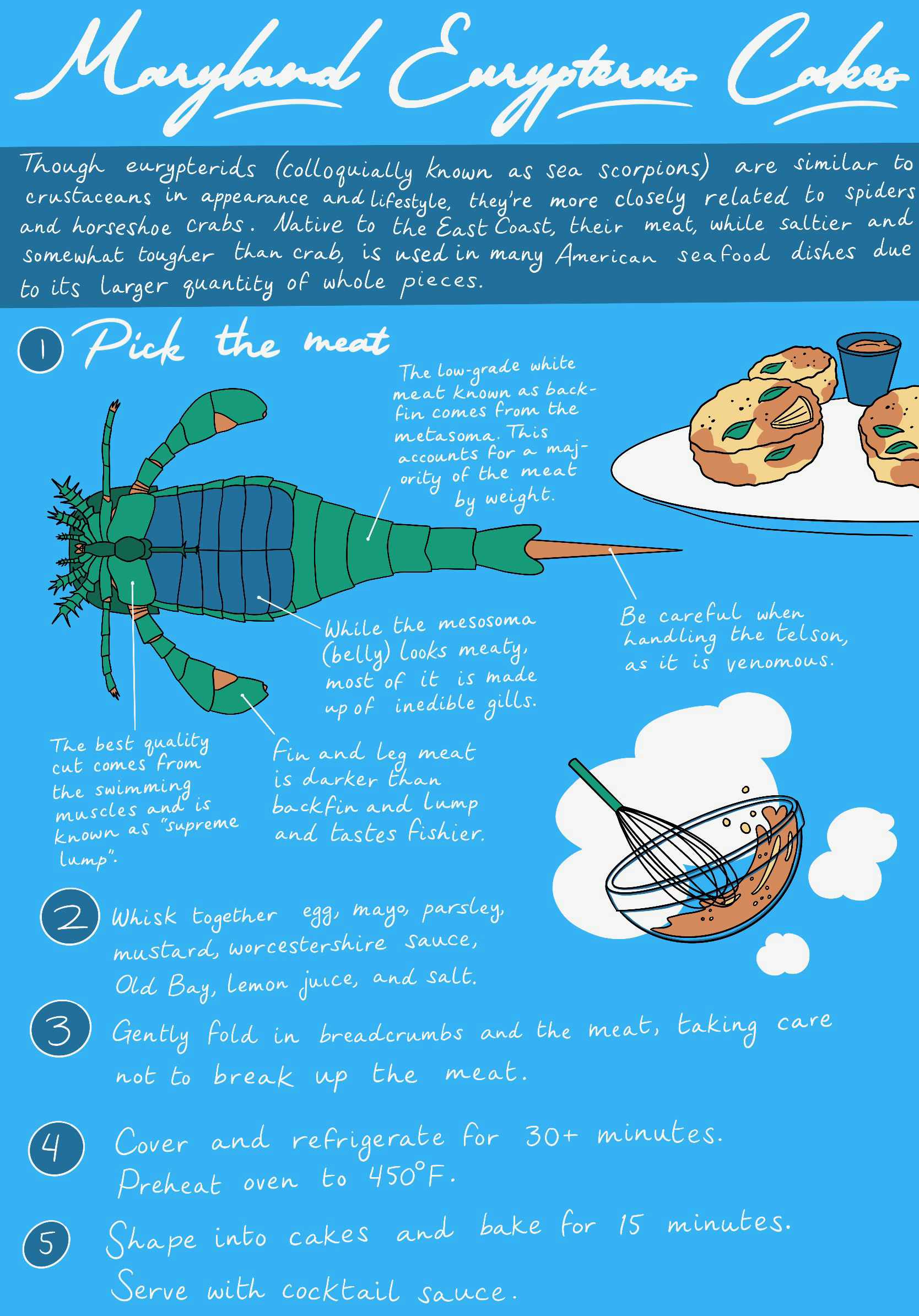
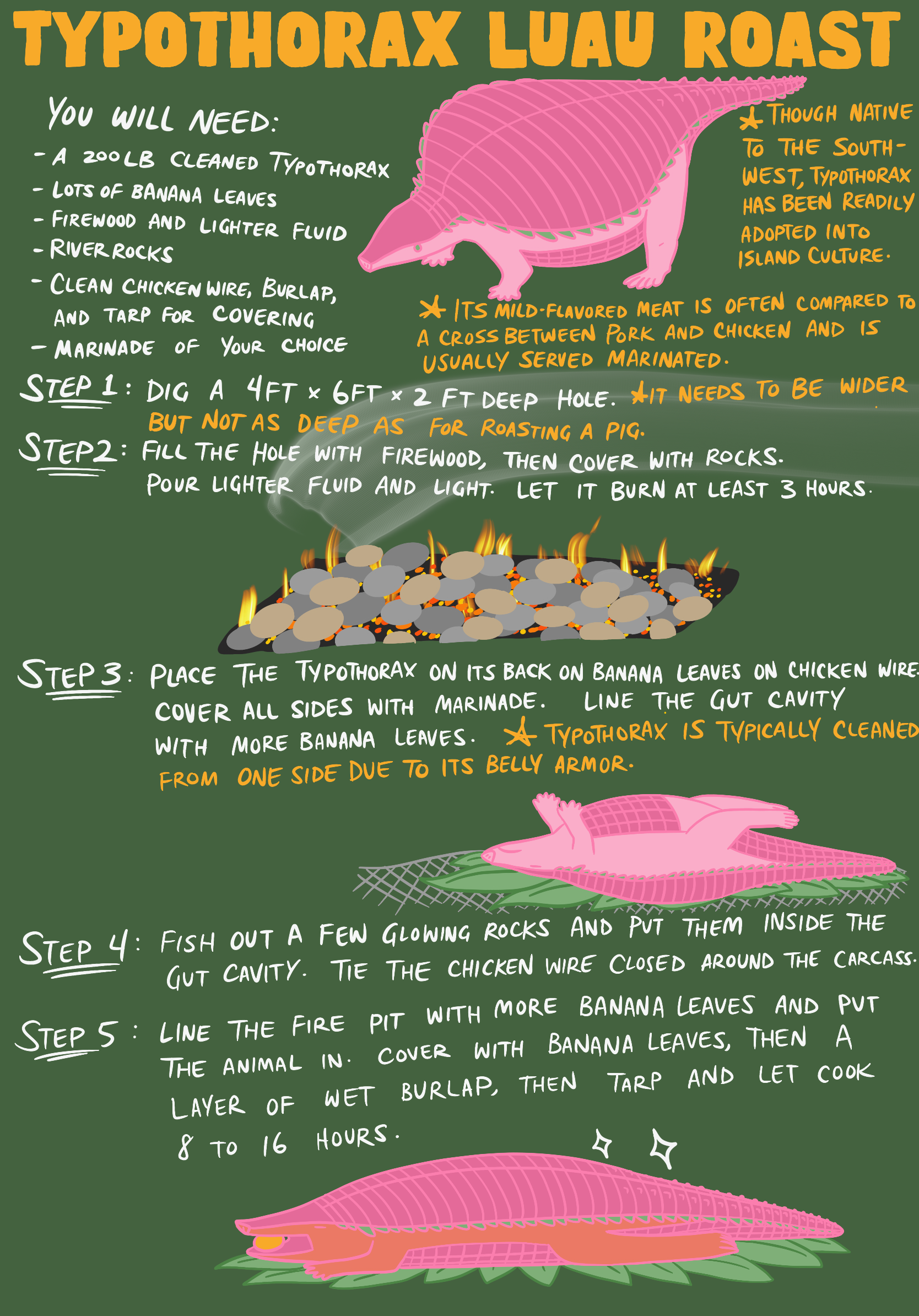

I really enjoyed making these, but I think I’d need about 20 to justify turning them into a book, and I’ve exhausted most of my good ideas already. Other options I considered were
- Stethacanthus fin soup - A small shark from the Devonian with a strange, brushlike dorsal fin that I thought would make a cool garnish. But when I Googled ‘shark fin soup recipe’ every recipe poster was getting violently attacked by righteous vegetarians. Since I met with a little bit of righteous vegetarianism even with the above examples, I thought best to steer clear of this one.
- Prionosuchus legs - a croc-sized Permian amphibian whose preparation would probably be a cross between cleaning a frog and an alligator. There’s not nearly as much detailed anatomical information available online for croc butchery, or Prionosuchus musculature, as there is for cows and Edmontosaurus.
- Boiled Arthropleura feed - this one I might still do. Arthropleura was a giant millipede from the Carboniferous that was the largest known terrestrial arthropod. How would one cook it? By rolling it up into a pan like a scroll? Or by dragging it through a pot a little at a time?
- Placerias mutton, Diictodon spit roast - These are Permo-Triassic dicynodonts (roly-poly relatives of mammals). Placerias was hippo-sized, while Diictodon was more like a guinea pig. While they would probably be tasty, I didn’t feel like there was enough content for an infographic.
- Leedsichthys sashimi - the largest non-tetrapod fish to ever live, this Jurassic whale-sized filter-feeder would’ve made a great centerpiece at an extravagant party. However, it would just be like a scaled-up swordfish, which doesn’t seem interesting enough for an infographic.
Let me know if you have any other good ideas! I also don’t know much about ancient plants, so if any paleovegetarian dishes stand out as having potential, I’d love to hear about them.

